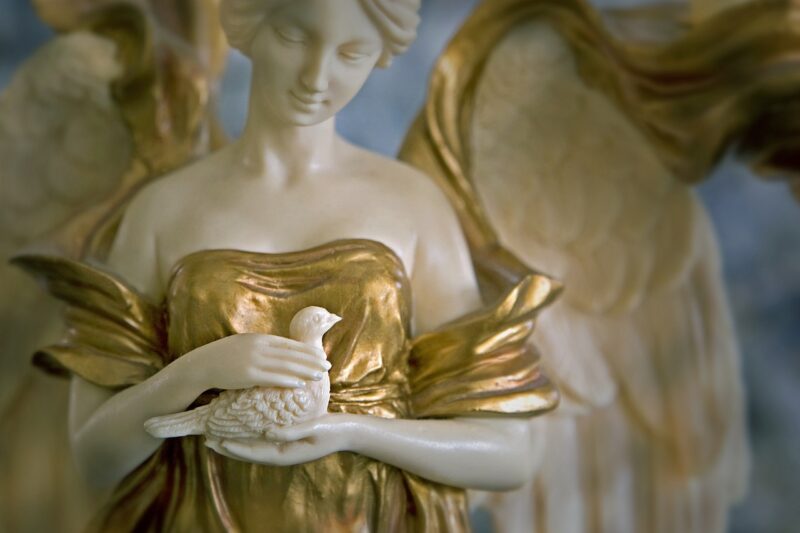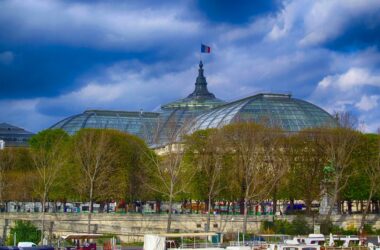Art Nouveau, a style of decorative art, architecture, and design prominent in the late 19th and early 20th centuries, is characterized by its organic forms, intricate linear designs, and flowing curves inspired by natural elements. Originating in Europe, this movement marked a significant departure from the historical revivalism that dominated much of the 19th century. Art Nouveau was not only an artistic style but a comprehensive philosophy of design that sought to harmonize all aspects of living, emphasizing craftsmanship and the integration of fine arts and applied arts.
Historical Development
Origins and Influences
Art Nouveau emerged in the 1890s as a reaction against the academic art, eclecticism, and historicism of 19th-century architecture and decoration. It drew inspiration from a variety of sources, including Celtic art, Japanese prints, and the Arts and Crafts Movement, which emphasized handcraftsmanship and the inherent beauty of materials.
Key Figures and Movements
Prominent figures in the Art Nouveau movement include Victor Horta in Belgium, Antoni Gaudí in Spain, Hector Guimard in France, and Charles Rennie Mackintosh in Scotland. Each contributed uniquely to the development and propagation of the style. In the graphic arts, Alphonse Mucha’s posters became iconic, while Gustav Klimt’s paintings encapsulated the decorative and symbolic aspirations of the movement.
Geographical Spread
Art Nouveau flourished in different regions under various names: Jugendstil in Germany, Stile Liberty in Italy, and Modernisme in Catalonia. Each region infused local traditions and materials into the style, creating distinct variations while maintaining the core principles of fluidity and naturalism.
Themes and Styles
Nature and Organic Forms
Central to Art Nouveau was the inspiration drawn from the natural world. Designers used flowing lines, plant forms, and other natural motifs to create intricate, harmonious designs. The whiplash curve, a sinuous line seen in many Art Nouveau works, became a defining element of the style.
Symbolism and Mythology
Symbolism played a crucial role in Art Nouveau, with many artists incorporating mythological and allegorical themes into their works. This was often reflected in the use of female figures, who embodied nature, beauty, and fertility.
Integration of Arts
Art Nouveau aimed to break down the barriers between fine arts and applied arts. This integration is evident in architecture, where buildings featured not only innovative structural designs but also detailed interior decorations, stained glass, and custom furniture, all designed to create a cohesive aesthetic experience.
Techniques Used
Materials
Art Nouveau artists employed a variety of materials, including glass, wrought iron, ceramics, and wood, to create their intricate designs. The emphasis was on the craftsmanship and the natural beauty of the materials themselves.
Methods
Techniques such as glassblowing, metalworking, and woodworking were refined to achieve the delicate and complex forms characteristic of Art Nouveau. In graphic arts, lithography allowed for the mass production of posters, bringing Art Nouveau designs to a wider audience.
Notable Works
Architecture
- Victor Horta’s Hôtel Tassel: An early example of Art Nouveau architecture, featuring a blend of organic forms and innovative use of materials.
- Antoni Gaudí’s Sagrada Família: A masterpiece of structural ingenuity and elaborate decorative detail.
- Hector Guimard’s Paris Métro Entrances: Iconic examples of urban Art Nouveau design, combining functionality with aesthetic appeal.
Decorative Arts
- René Lalique’s Jewelry and Glass: Renowned for their exquisite craftsmanship and naturalistic motifs.
- Louis Comfort Tiffany’s Lamps: Combining vibrant colored glass with organic forms, these pieces epitomize Art Nouveau aesthetics.
Fine Arts
- Gustav Klimt’s “The Kiss”: A quintessential Art Nouveau painting, known for its use of gold leaf and intricate patterns.
- Alphonse Mucha’s Posters: Characterized by their flowing lines, decorative borders, and idealized female figures, Mucha’s posters were pivotal in popularizing Art Nouveau graphic arts.
Cultural Impact
Influence on Design
Art Nouveau had a profound impact on various design disciplines, including graphic design, furniture design, and interior decoration. Its emphasis on artistic unity and craftsmanship influenced subsequent movements, such as Art Deco and Modernism.
Legacy
While Art Nouveau’s popularity waned by the outbreak of World War I, its legacy endures in the continued appreciation and study of its works. The movement’s influence is evident in contemporary design trends that favor organic forms and intricate detailing.
Contemporary Scene
Revival and Recognition
There has been a resurgence of interest in Art Nouveau, with numerous exhibitions and publications dedicated to exploring its history and significance. Modern designers and artists often draw inspiration from Art Nouveau’s rich visual language.
Preservation and Conservation
Efforts to preserve Art Nouveau architecture and artifacts have intensified, recognizing their historical and aesthetic value. Organizations and enthusiasts work to maintain and restore Art Nouveau buildings and objects, ensuring their legacy for future generations.
Exhibitions and Galleries
Noteworthy Exhibitions
- The Musée d’Orsay in Paris: Houses an extensive collection of Art Nouveau furniture, glassware, and decorative objects.
- The Museum of Applied Arts in Budapest: Features significant Art Nouveau works, particularly from Hungarian artists.
- The Art Nouveau Museum in Riga: Dedicated entirely to Art Nouveau, highlighting the movement’s impact on the city’s architecture and design.
Galleries
Many contemporary galleries continue to showcase Art Nouveau pieces, both historical and modern, highlighting the movement’s enduring appeal and influence on current design practices.
Collecting Art Nouveau
Tips for Collectors
Collecting Art Nouveau pieces requires knowledge and appreciation of the movement’s key characteristics and artists. Authenticity and provenance are crucial, as is understanding the condition and rarity of the items.
Investment Potential
Art Nouveau artifacts, especially those from renowned artists and designers, are highly sought after and can be valuable investments. The market for such pieces remains robust, reflecting the continued fascination with this unique art movement.
Conclusion
Art Nouveau represents a pivotal moment in the history of art and design, marked by its embrace of natural forms, intricate detailing, and the unification of various artistic disciplines. Its influence is evident in numerous fields, from architecture to graphic design, and its legacy continues to inspire contemporary artists and designers. Whether through the preservation of its masterpieces or the reinterpretation of its principles, Art Nouveau remains a testament to the enduring power of artistic innovation and beauty.









